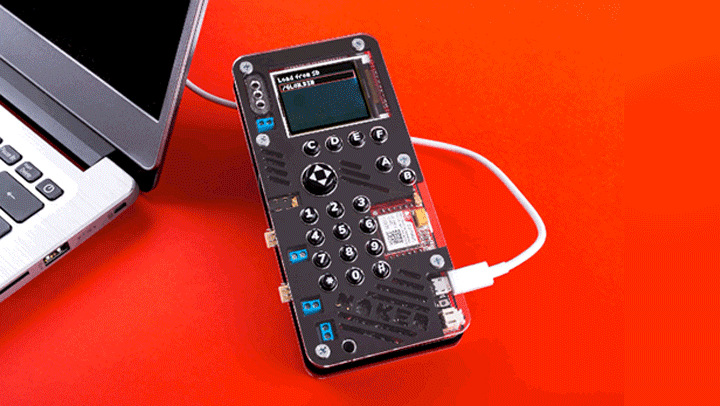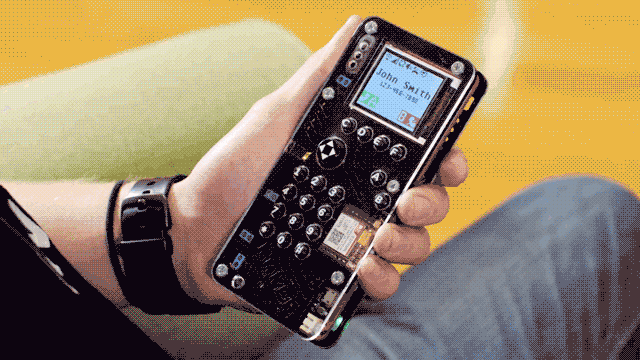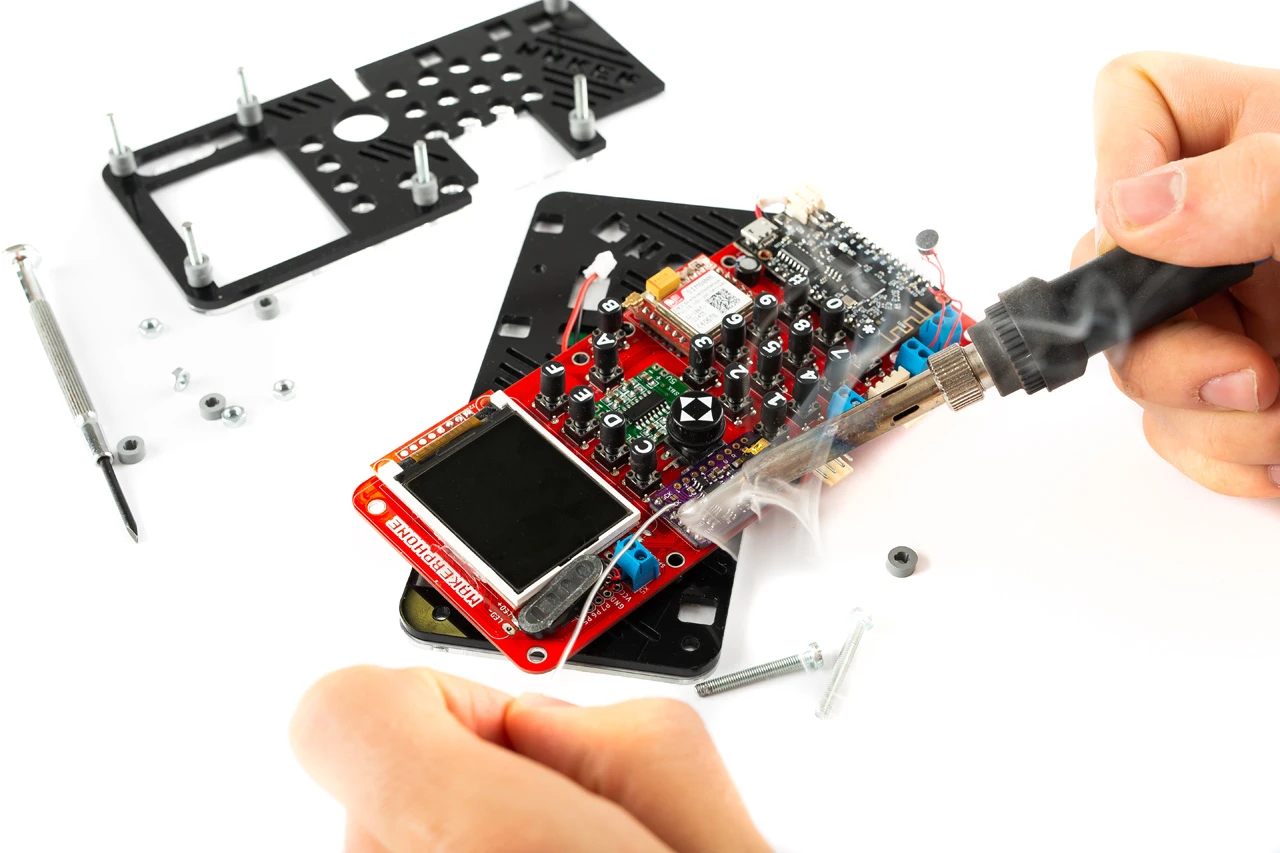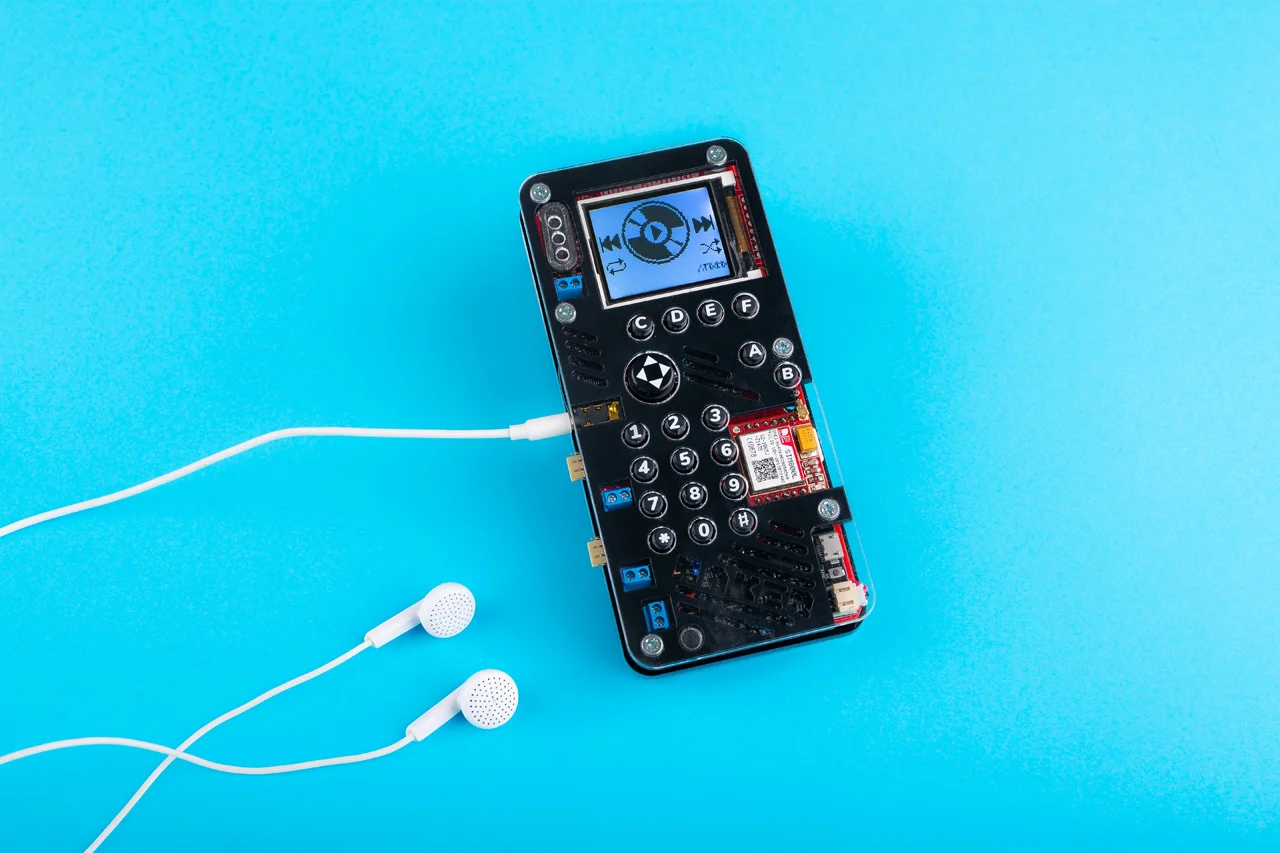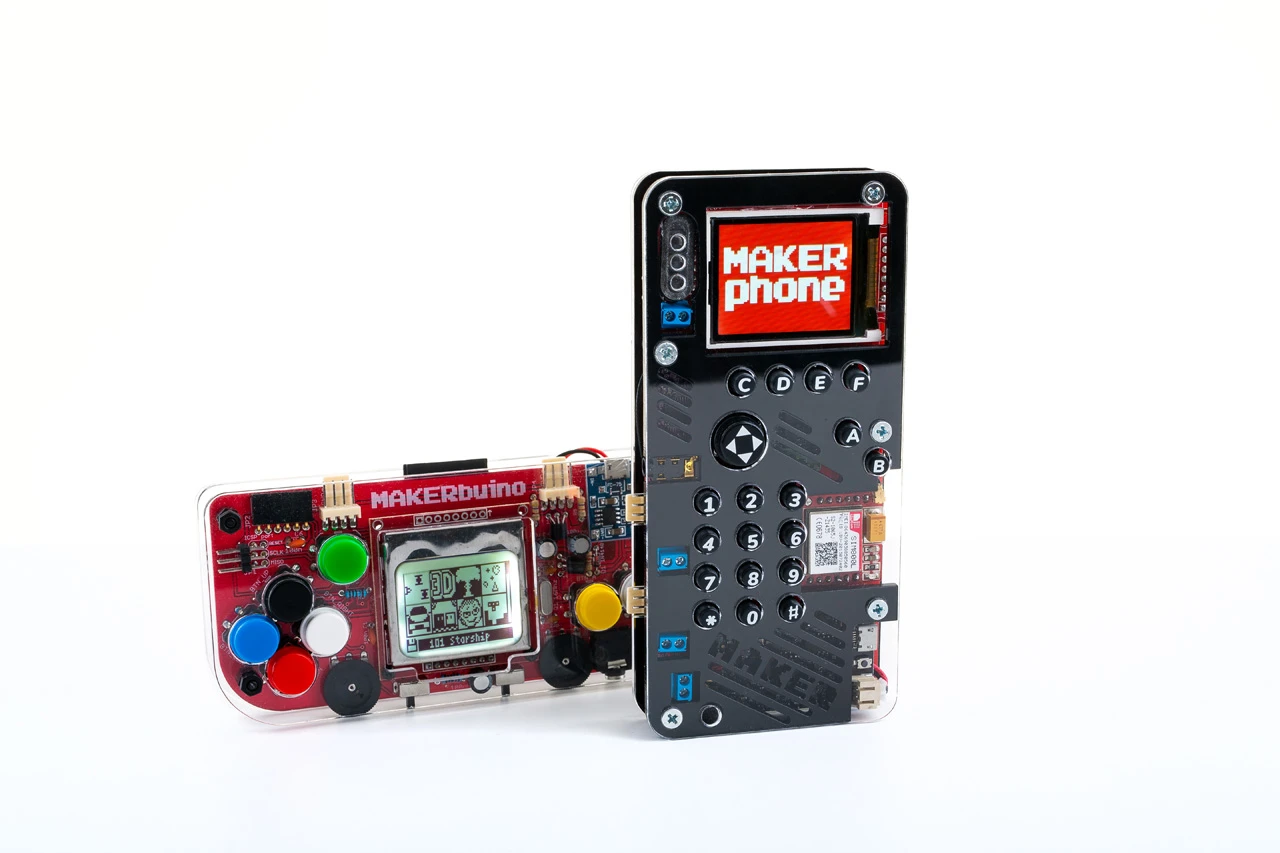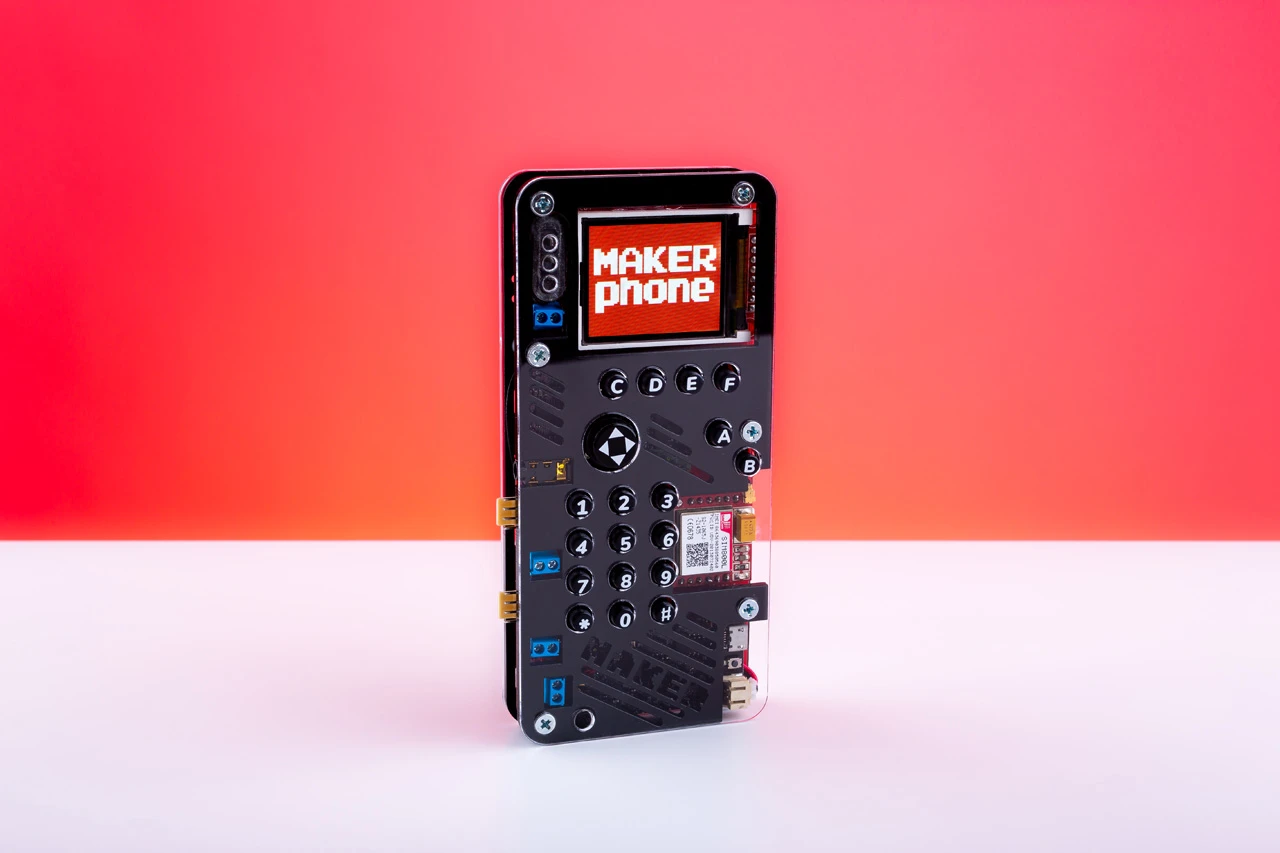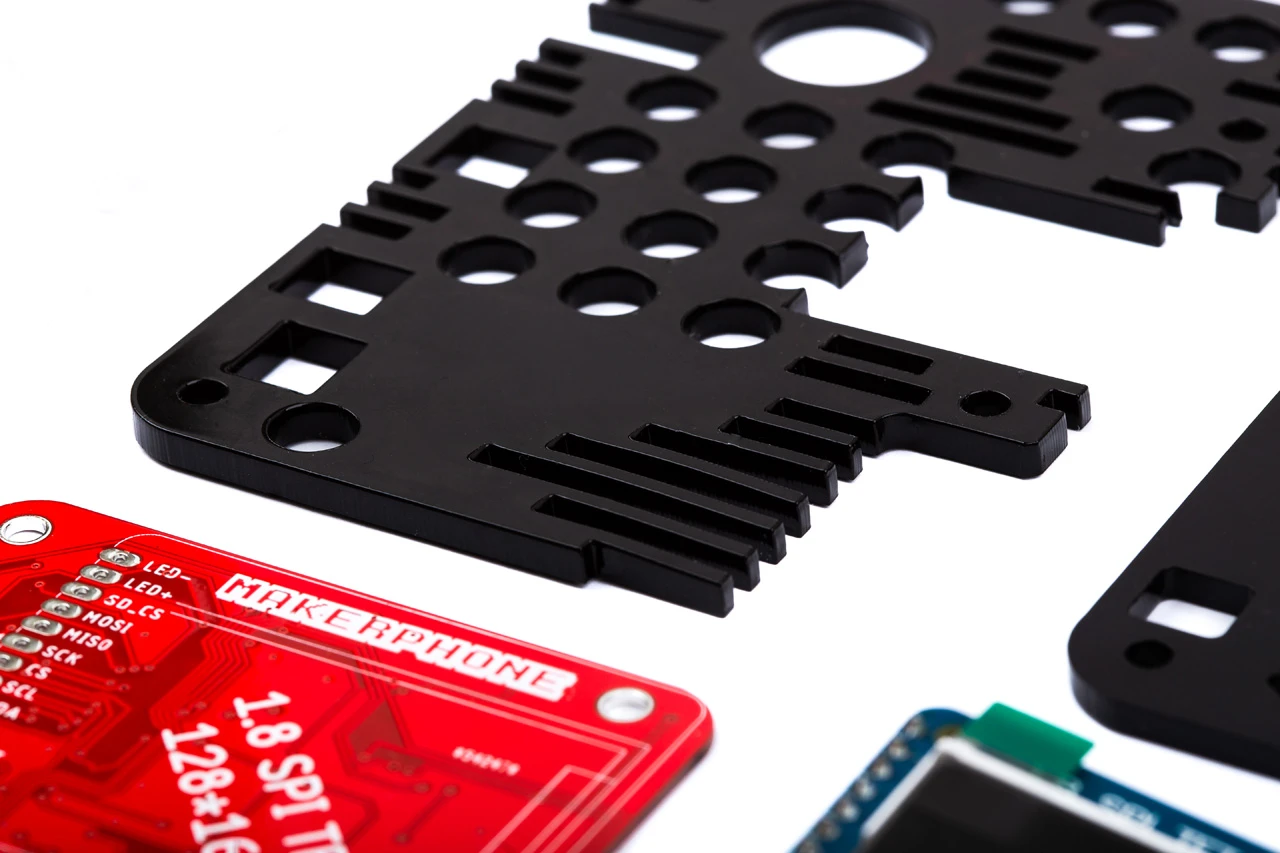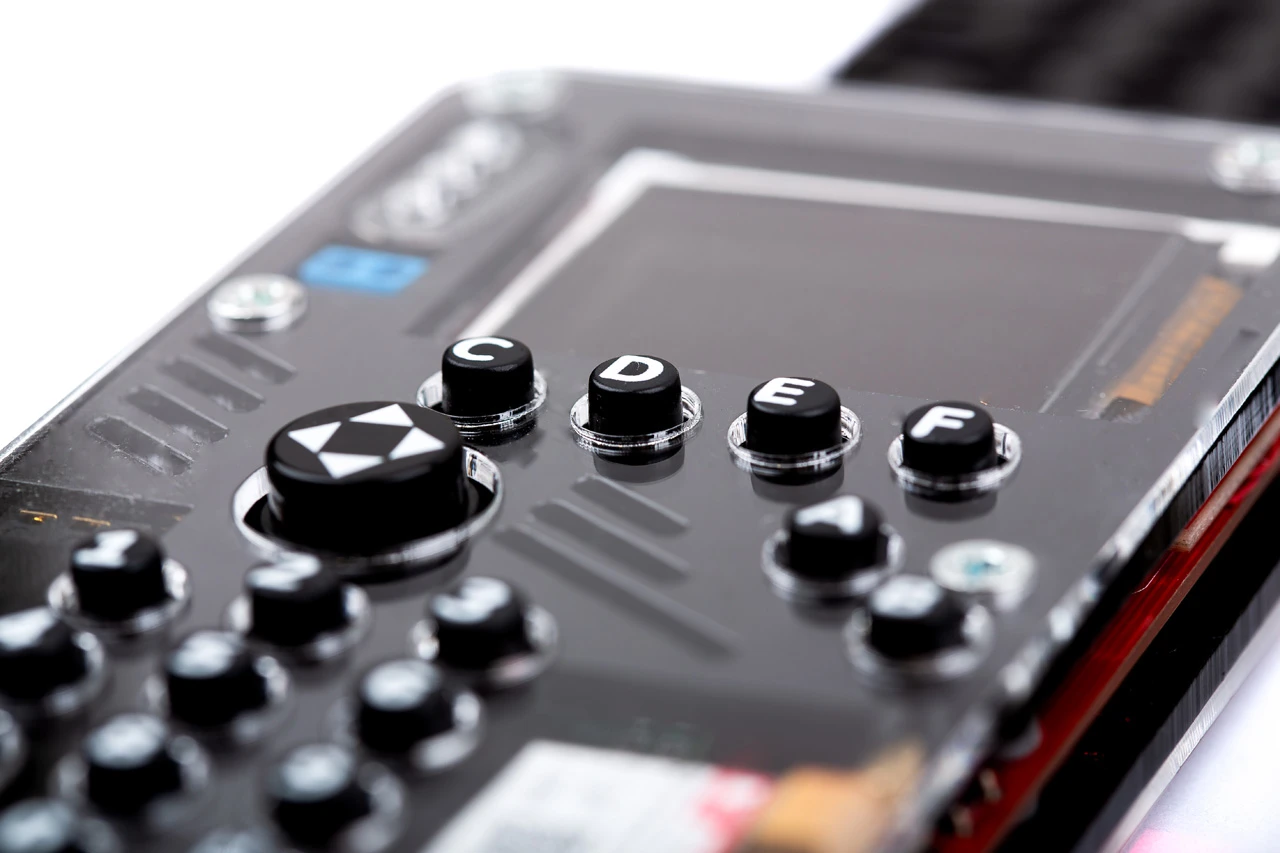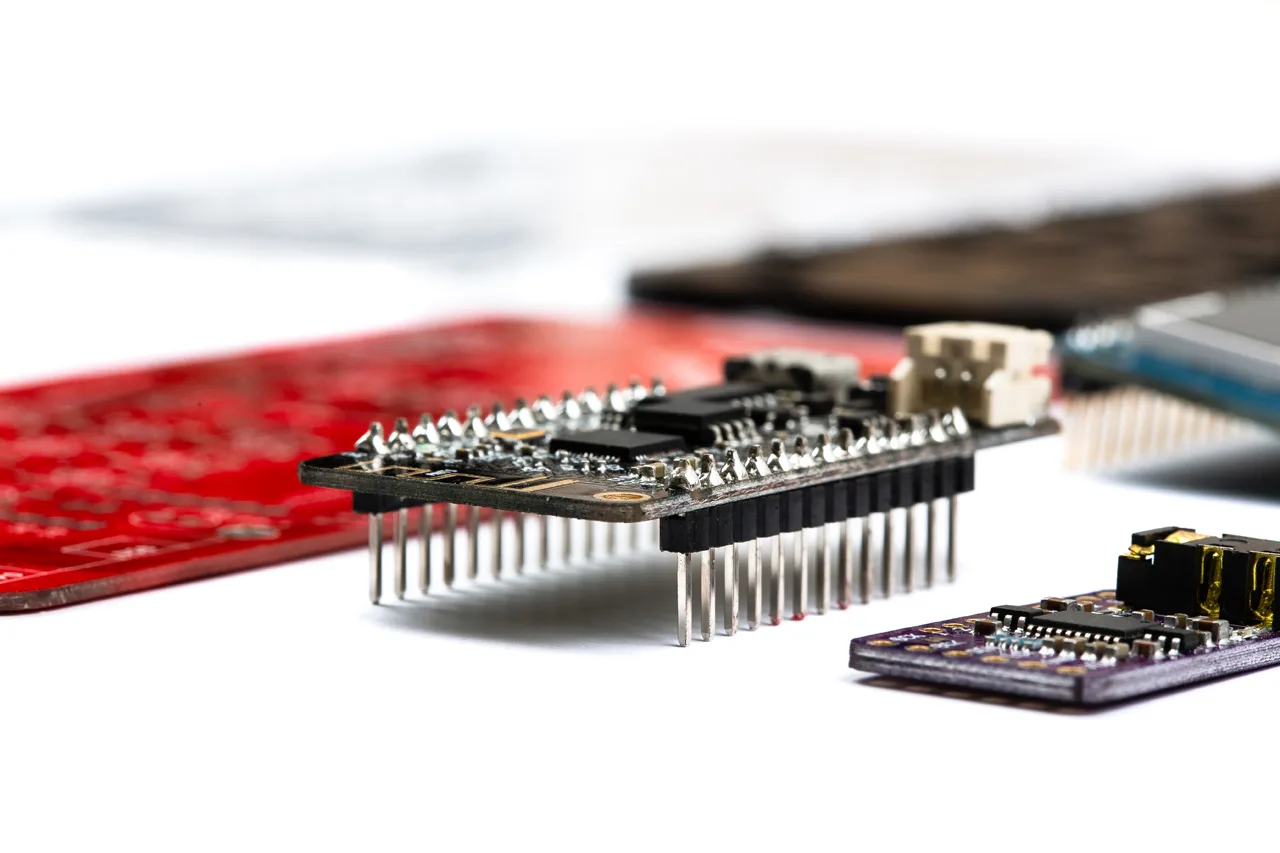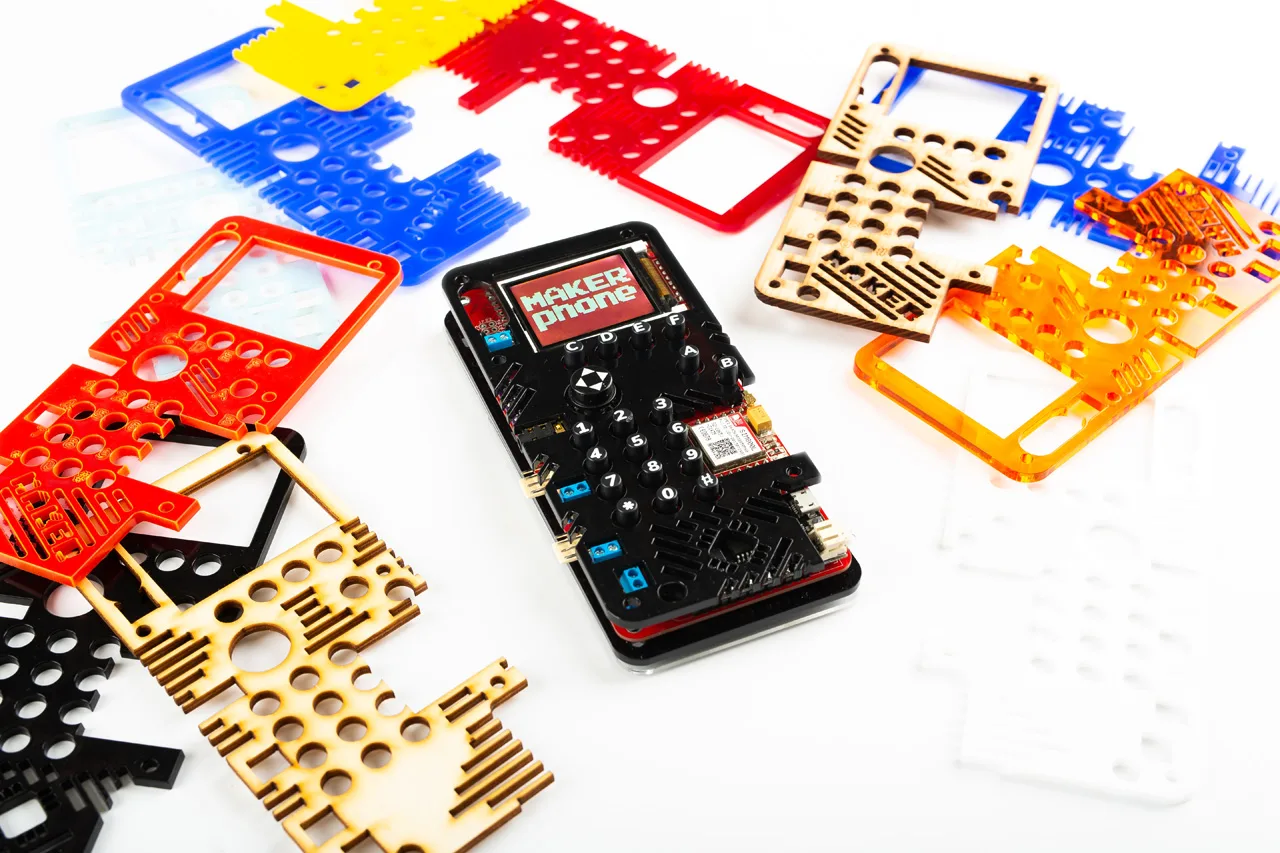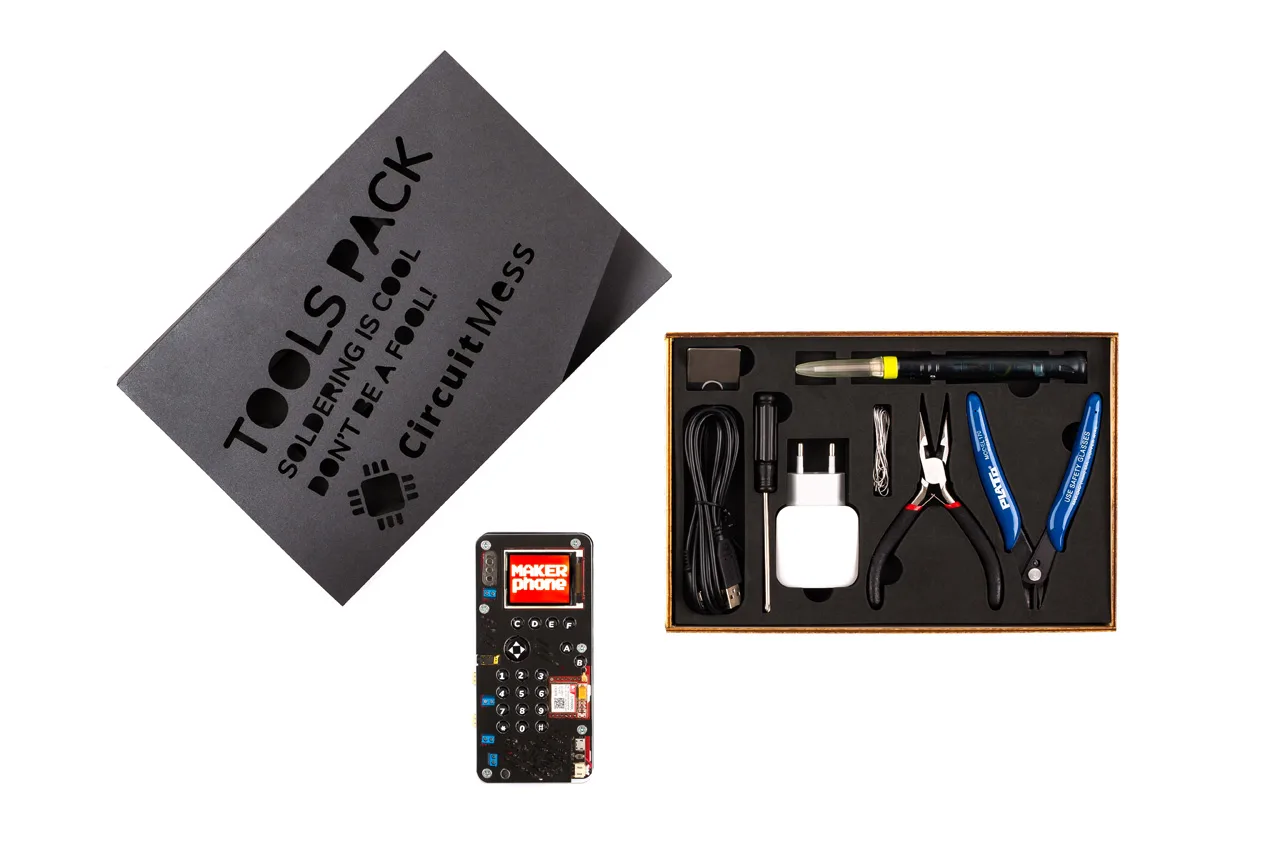I used to love soldering back in the day of hobbyist electronics. Assembling something, while learning about it and then using it, was extremely satisfying. That era has been lost to the complex engineering of touch screens and smartphones–but computer enthusiast Albert Gajšak wants to bring back hobbyist enthusiasm by releasing a DIY phone kit. It’s called the MAKERphone and it’s pretty damn cool.
For Gajšak, the process of building your own phone isn’t about nostalgia. Rather, it’s that we need to be empowered as users and creators, rather than passive consumers. He and his team want to give people the ability to create a smart-enough phone without all the time-sucking needless features, while learning about how the world around us works in the process.
MAKERphone is “hardware, wires, chips, education, and electricity,” as the group explains on Kickstarter. It builds on a previously successful Kickstarter venture, the MAKERbuino, a Gameboy-like handheld console that ran on the Arduino computer platform, a favorite of DIY electronics enthusiasts. In 2017, they shipped 6,000 MAKERbuino kits, and they’re on track to surpass that goal with MAKERphone. So far, the campaign, which originally had a $15,000 goal, has generated $85,520.
[Image: CircuitMess]MAKERphone, as its inventors explain, is not a LEGO-like kit where you simply stack components; you’ll need to get your hands dirty with soldering irons and screwdrivers. The kit comes with all the components you need to build the phone, starting with Markerphone circuit board, which is the base onto which you’ll attach the rest of the electronics needed to create this DIY thingamajig.
That includes a full-color LCD screen with a resolution of 128 x 160 pixels, comparable to the screens of early Nokias, Sonys, and other dumb phones of yore. It’s enough to display an address book and phone caller info, and of course to play games like Snake or Space Invaders. (In fact, you can play these games with dedicated gaming buttons that are included in the box.) There’s also a GSM module with a stick-on antenna that allows the phone to connect to a network to make calls or send texts, along with a main micro-computer with a dual core processor that also has Wi-Fi, and a sound module that can play ringtones, alarms, and sound effects. Finally, the kit includes a clear casing of laser-cut acrylic that acts as the bread to your electronic ham and cheese sandwich.
The kit costs $94 through the Kickstarter page but, if you choose the $119 option, you also get a cool wooden box with all the tools you need to assemble this thing: USB soldering iron, a stand for the soldering iron made of metal and a USB power brick to power it, a screwdriver, nose pliers, and diagonal cutter pliers.
If you’ve never assembled electronics, you’re missing out on a lot of fun. Plus, it demonstrates that our phones do not simply materialize from “robots and lizard people from Silicon Valley,” as Gajšak says in a video, but real people who manufacture them. In any case, the process will give you an increasingly unusual skill set today that will come in handy during the zombie apocalypse, when you have to fix the broken radio you found in an abandoned cabin in Montana.
Recognize your company's culture of innovation by applying to this year's Best Workplaces for Innovators Awards before the extended deadline, April 12.
